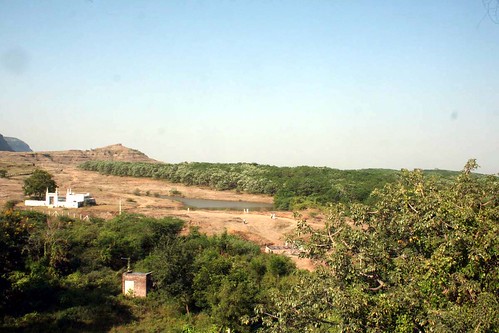There is a lot more water on the moon than previously believed, according to an analysis of NASA data being published Friday, a finding that may bolster the case for a manned base on the lunar surface.
The discovery grew out of an audacious experiment last year, when the National Aeronautics and Space Administration slammed a spent-fuel rocket into a lunar crater at 5,600 miles an hour, and then used a pair of orbiting satellites to analyze the debris thrown off by the impact. They discovered that the crater contained water in the form of ice, plus a host of other resources, including hydrogen, ammonia, methane, mercury, sodium and silver.
The discovery of significant amounts of water on the m there.
NASA announced its groundbreaking discovery of lunar water last November. Now, a more detailed analysis of the data—the subject of six research papers being published in the journal Science—concludes that there is a lot more water on the moon than anyone expected, about twice the concentrations seen in the Sahara Desert.
"It's really wet," said Anthony Colaprete, co-author of one of the Science papers and a space scientist at NASA Ames Research Center at Moffett Field, Calif. He and his colleagues estimate that 5.6% of the total mass of the targeted lunar crater's soil consists of water ice. In other words, 2,200 pounds of moon dirt would yield a dozen gallons of water.
The presence of water doesn't make it more likely that there ever was life on the moon, as the location studied is among the coldest in the solar system. But the large quantity boosts the case for a manned lunar base from which to launch other interplanetary adventures. Water is crucial because its components, hydrogen and oxygen, are key ingredients for rocket fuel. Oxygen can also be extracted from water to make breathable air.
Finding a water source on the moon has long been a dream, because it could save on the expense of transporting it from earth. A bottle of water on the moon would run about $50,000, according to NASA, because that is what it costs, per pound, to launch anything to earth's nearest neighbor.
Scientists have discovered significant amounts of water on the moon, a finding that may bolster the case for establishing a manned base on the lunar surface. Lee Hotz has details. Plus, who owns the moon? And why stocks were so volatile today.
The U.S. likely won't be involved in manned voyages to the moon anytime soon. President Barack Obama recently canceled a NASA program to return astronauts to the lunar surface a decade from now. The agency, however, is working on the grander, longer-term prize of a manned trip to Mars.
Jack Pfaller/NASA
NASA's Lunar Crater Observation and Sensing Satellite and its Centaur booster rocket crashes into the moon in this artist's illustration.
But other countries are gearing up. China has pledged to land astronauts on the moon by 2025, and India has plans to do the same by 2020. Japan wants to establish an unmanned moon base in a decade, potentially setting the stage for a manned mission later. So far, only the U.S. has sent astronauts to the moon.
NASA chose its impact site carefully. Because of the tilt of the moon's axis, the floors of large craters at either pole haven't received direct sunlight for billions of years. NASA's target was a crater, Cabeus, near the southern pole.
Cabeus is a cosmic trap. Any material that lands there sticks. "There's almost no energy to warm up the molecules, so that they can't bounce off again," said G. Randall Gladstone, co-author of one of the Science papers and a planetary scientist at the nonprofit Southwest Research Institute in San Antonio.
Dr. Gladstone and others believe that Cabeus contains cosmic material that has accumulated over a billion years or more. Scientists know that most of the moon is almost entirely dry. But some remote observations had suggested that water might be present at cold-trap regions of the moon.
The quantity of water discovered was 50% greater than NASA's initial estimates. Other measurements suggest there's even a "lunar permafrost" covering about 30% of the southern polar region of the moon, with ice lying just below the surface.
In its search for lunar water, NASA launched an Atlas V rocket stacked with an upper-stage rocket known as Centaur. Above it sat the Lunar Crater Observation and Sensing Satellite, or LCROSS, roughly the size of a Volkswagen Beetle. Atop that sat another satellite, the Lunar Reconnaissance Orbiter, or LRO.
The LRO went into moon orbit. Centaur eventually flew toward the Cabeus crater, followed by a hurtling LCROSS. Drained of fuel, Centaur was now the equivalent of an empty soda can 36 feet tall.
It slammed into the crater's "fluffy, snow-covered dirt," scientists said, spewing at least 8,800 pounds of debris, dust and vapor. LCROSS's instruments took measurements on the quantity of water vapor and ice in the plume, then smashed into the moon as well.
The LRO satellite, meanwhile, orbited 30 miles above the moon. Its main task—which it continues to do today—was to create a three-dimensional map of the moon's surface, but it collected data on the impact plume as well.
A surprising amount of the Cabeus dirt, about one-fifth, is a mix of different elements and volatile compounds, including water. The rest is made from the typical components of moon rock, including feldspar and basalt.
How NASA Found Water on the Moon
The scientists also found molecular hydrogen in the soil. "That's interesting because if you want to make rocket fuel you could heat up the soil and hydrogen would come pouring out," said Dr. Gladstone.



![[SB10001424052702304741404575564823614701964]](http://s.wsj.net/public/resources/images/OB-KN665_MOON04_D_20101021092241.jpg)


